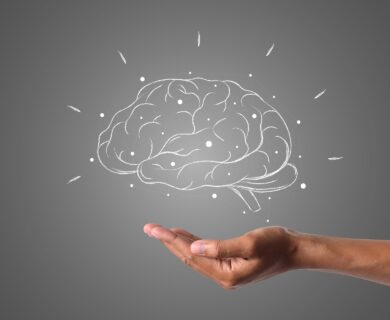It has been almost a century since the counterintuitive principles of quantum mechanics befuddled and then shocked the physics community. Even the fathers of this “new science” could not believe what they had created. Neils Bohr, a founding father and driving force behind this strange new science said, “Anyone who is not shocked by the quantum theory has not understood it.” Werner Heisenberg, most noted for his uncertainty principle, told us, “… here the foundations of physics have started moving; and that motion has caused the feeling that the ground would be cut from science.” What was bothering the scientists and what has it to do with us?
Classical physics deals with the macro world, the world of our senses, of cause and effect. Newton felt that if we could gather enough data about an object or condition we could not only know its future but its past as well. Of course, except for the most elementary systems, this is not true. We cannot know all the forces involved, all of the actions and reactions that have influence over even as simple an event as flipping on a light switch. Chaos theory’s butterfly wing analogy probably best illustrates this point.
Until the advent of quantum mechanics classical physics founded on Newton’s laws dominated our thoughts and actions. It does so still today as few, if any scientific disciplines including medicine, biology, chemistry, psychology, etc. have been able to integrate the discoveries of quantum mechanics into their discipline. But, like any major shift in human consciousness, the realization of quantum mechanics is trickling down into common consciousness.
But that’s what quantum mechanics is telling us. It can’t trickle down, at least in the traditional Newtonian sense. At the very core of quantum mechanics is the realization that life cannot be owned. Life is not a certainty – it is a probability, or more accurately, both. Any thought, word, action, or object is at once a certainty and a probability. The pebble in the palm of your hand is a certainty only in the most superficial sense. You think you know the pebble but what is its actual reality? Is it what you perceive with your senses? Is it a seething soup of chemicals or waves forming subatomic particles blinking in and out of existence at the speed of light? It is of course all of these things and more. And, it is less…it is nothing. (Experience Nothing – Pure Awareness Free Download)
The pebble is both being and becoming, dying and being reborn. Who among us can profess to know anything in its entirety? The possibilities are infinite in every direction and that is why certainty is an illusion. The closest we can come to accurately predicting the life of an atom, a pebble, or our self, is a probability. My favorite quote from Nisargadatta Maharajah is, “Knowledge is ignorance.” For as soon as we feel that we know a butterfly we imprison it within our mind ending the process of becoming. There it becomes a memory isolated from its living breathing reality. There it turns to stone.
So what are we to do? We must be open to both the apparent reality and the probability that it is becoming. How do we do that? We start by becoming aware of our own reality, the foundation upon which we will build. Who are we? Our bodies and minds are made of the same basic stuff as pebbles. Before they become subatomic particles or probability waves they are still. Quantum mechanical theorist David Bohm calls the stillness implicate order. No machine can measure this stillness but the human mind can experience it. When it does the mind and body in turn become still. This stillness is the progenitor of both being and becoming. From the vantage point of stillness we perceive the world before judgment and analysis and the distortion of emotion manifest. The mundane becomes pregnant with potential. The pebble in the palm of your hand breathes in light and exhales love.






instagram says:
I will right away snatch your rss as I can’t find your
email subscription hyperlink or newsletter service. Do you have any?
Please permit me recognise so that I could subscribe.
Thanks. instagram
instagram
instagram
extra says:
I’m finding that doing guest posting on blogs is a fantastic way to establish yourself as a credible expert in your field.